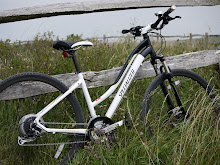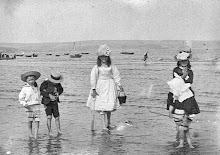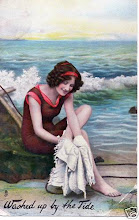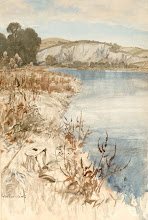
my photos
kindness is a heavenly virtue ...
I was one lucky recipient of spontaneous kindness from Diana at Pebbledash the other day, after receiving through the post one of her gocco print notecards, inspired by Cornish hedgerow.
On recycled paper, it arrived along with an envelope to match, with a wrap of lilac paper, string and matching tag.

Cornish Cliffs - by Sir John Betjeman
Those moments, tasted once and never done - Of long surf breaking in the midday sun - A far off blowhole booming like a gun - The seagulls plane and circle out of sight - Below this thirsty, thrift-encrusted height - The veined sea-campion buds burst into white - And gorse turns tawny orange, seen beside - Pale drifts of primroses cascading wide - To where the slate falls sheer into the tide - More than in gardened Surrey, nature spills - A wealth of heather, kidney-vetch and squills - Over these long-defended Cornish hills - A gun-emplacement of the latest war - Looks older than the hill fort built before Saxon or Norman headed for the shore - And in the shadowless, unclouded glare - Deep blue above us fades to whiteness where - A misty sea-line meets the wash of air - Nut smell of gorse and honey smell of ling - Waft out to sea the freshness of the spring - On sunny shallows, green and whispering - The wideness which the lark-song gives the sky - Shrinks at the clang of seabirds sailing by - Whose notes are tuned to days when seas are high - From today's calm, the lane's enclosing green - Leads inland to a usual Cornish scene - Slate cottages with sycamore between - Small fields and tellymasts and wires and poles - With, as the everlasting ocean rolls - Two chapels built for half a hundred souls.
Louise x
g















































































